
Is this the makings of a great meal in the great outdoors, or another one of Mr. Sato’s too-crazy-for-his-own-good schemes?
While it’s not as well-known internationally as ramen, soba, or udon, Japan also has a soft spot in its heart for the ultra-thin wheat noodles called somen. Usually eaten cold during the summer months, somen also has the potential to be the most entertaining kind of Japanese noodle to eat if you have it nagashi somen-style, in which diners catch bunches of noodles with their chopsticks as they flow down a stream of water running in a sliced bamboo tube or other long container.
As with many culinary traditions, the exact origins of nagashi somen are unknown, though many scholars believe it first developed on Japan’s southwestern island of Kyushu. But our Japanese-language correspondent Mr. Sato said that he knows the true genesis of nagashi somen.
According to Mr. Sato, nagashi somen owes its existence to Himiko, the mystical monarch who ruled Japan’s ancient Yamataikoku kingdom in the second and third centuries. As part of a ritual to ensure a good harvest for her people, Mr. Sato assures us, Himiko was the first person to eat nagashi somen, and she did so while standing in a river.
For those of you new to RocketNews24, we should probably mention that Mr. Sato isn’t always the most mentally sound individual, and so sometimes it’s best to take his claims with a grain of salt (though preferably not salt made from Mr. Sato’s sweat). Still, he insisted that the real way to eat nagashi somen was while standing in a river. So we boiled a batch of somen, grabbed some bowls and chopsticks, and piled into the RocketMobile for a drive out of Tokyo and into the countryside.
After parking, we made our way to the water’s edge, and Mr. Sato waded into the stream. However, he’d also need someone to flow the noodles down the river to him, so the rest of our reporters who’d accompanied him followed him into the water.
Then it was time for nagashi somen!
▼ You’d be surprised how many of our group meals involve Mr. Sato taking his shirt off.
Mr. Sato proved to be remarkably adept at snatching noodles out of the river, and under his tutelage, the rest of our taste-testers were also able to grab their somen before it floated past them.
▼ Although some of them used a net, just to be on the safe side.
Before taking the first bite, though, Mr. Sato had one more cultural reminder for us. “Don’t think of this as eating somen,” he explained. “What you’re doing is drawing the earth into your body, so that the energy provided by Her Highness Himiko will reach every corner of your cells.”
And with that, it was finally time to try Mr. Sato’s “real nagashi somen”…
…and all those who did dubbed it incredibly delicious!
▼ The face of a satisfied, vindicated palate.
But why did floating the somen down the river boost its flavor? Mr. Sato’s logic is that the river water contains natural minerals which the noodles soak up, an effect you can’t achieve with big-city tap water. After eating a few more mouthfuls, Mr. Sato tilted his eyes to the heavens and shouted his thanks to Himiko, while fellow reporter P.K. Sanjun declared it perhaps the best somen he’d ever had, plus worthy of seven Michelin stars (if the famed French dining guide rated rivers, that is).
Now, before you rush out to the nearest river with a pack of noodles, we should warn you that, in addition to tasty minerals, there are all sorts of other things that could be present in an open body of water, some of which are extremely unpleasant or even dangerous. We’d also like to point out that some of the things Mr. Sato and P.K. have taste-tested for us before may have skewed their scale such that anything that doesn’t have a high probability of killing them gets their thumbs-up, so bear that in mind, and remember that regular, non-river nagashi somen is always an option too.
Standard nagashi somen photo image: Wikipedia/Opponent
All other images ©RocketNews24
[ Read in Japanese ]

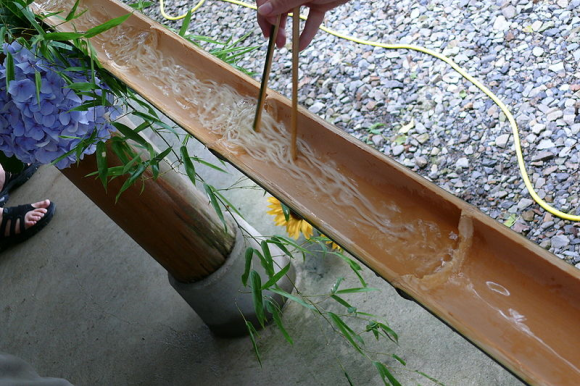
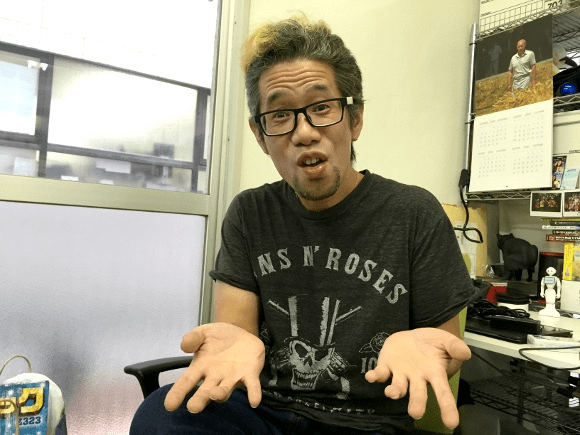

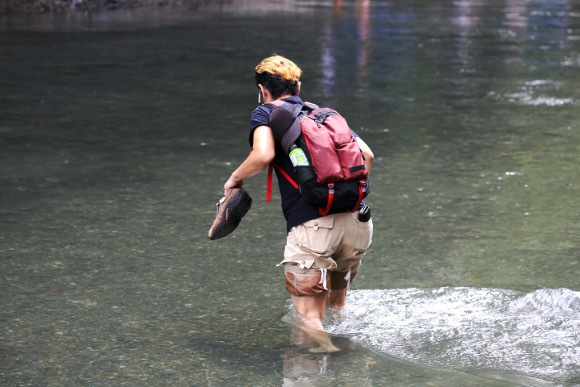
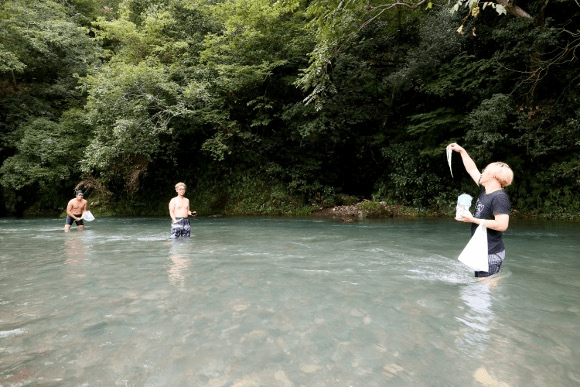
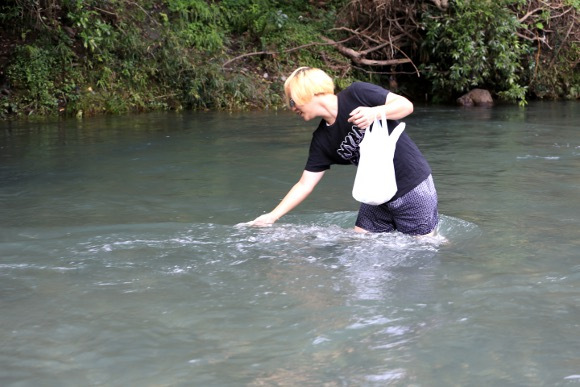
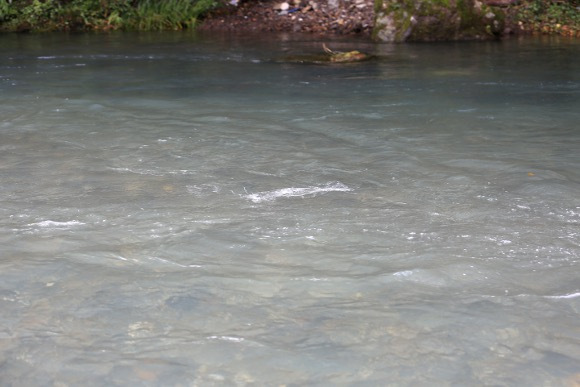
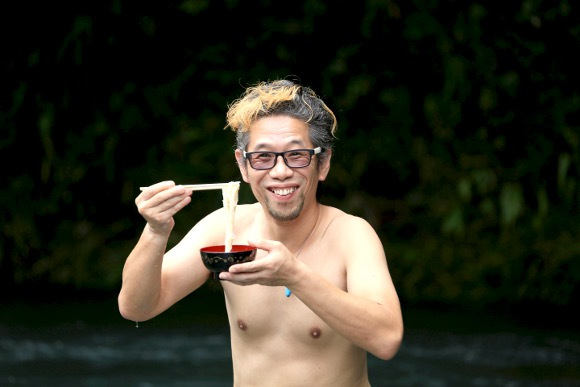
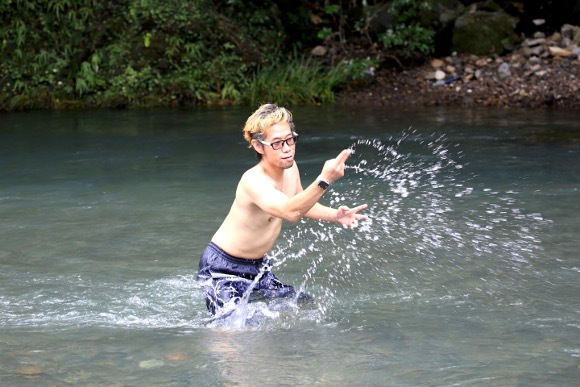
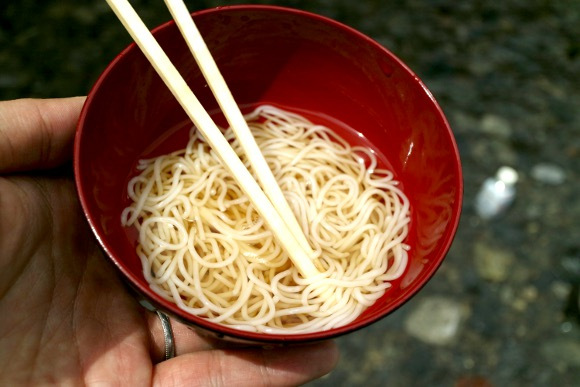
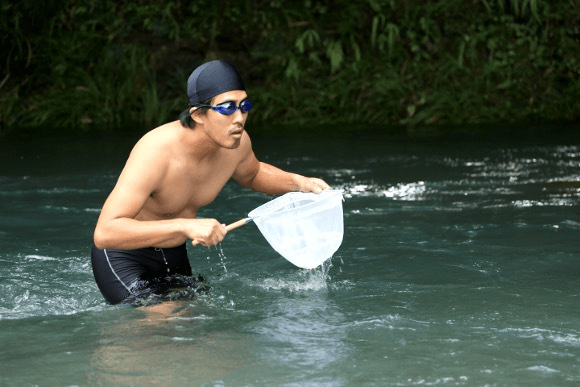

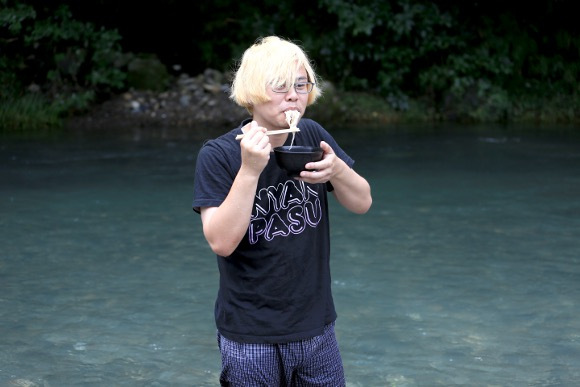
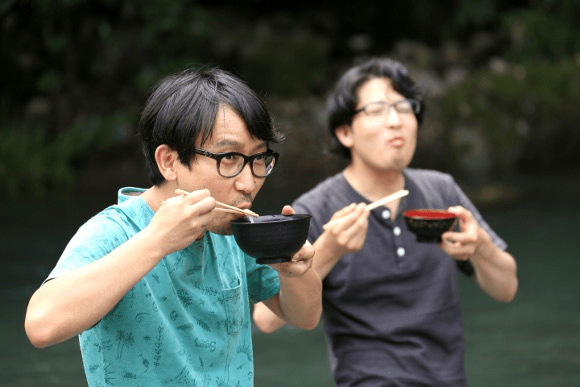
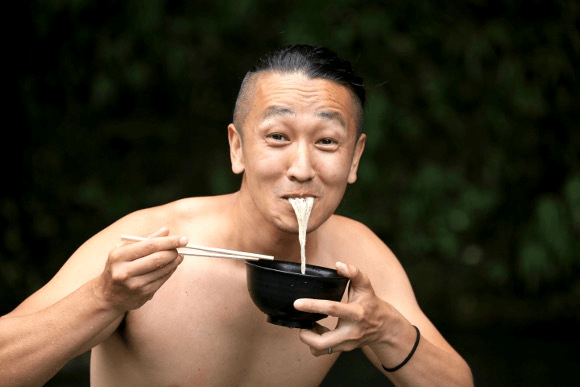
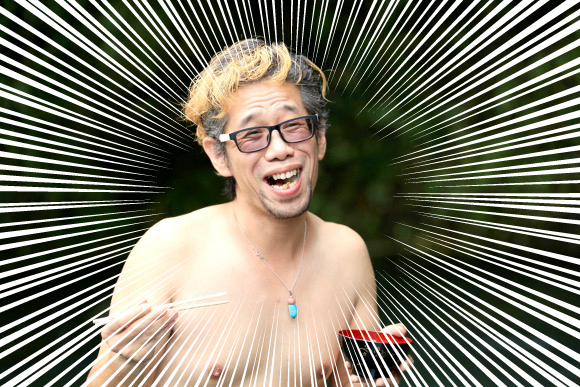
 Legendary Pokémon Rayquaza evolves into a nagashi somen noodle delivery system【Pics】
Legendary Pokémon Rayquaza evolves into a nagashi somen noodle delivery system【Pics】 Another at-home noodle meal? Then play with your food with Japan’s Big Stream Somen Slider Custom
Another at-home noodle meal? Then play with your food with Japan’s Big Stream Somen Slider Custom Event held to watch noodles go down a long water slide, but no noodle eating allowed
Event held to watch noodles go down a long water slide, but no noodle eating allowed Attention nagashi somen-iacs! This new Japanese gadget lets you enjoy flowing noodles solo
Attention nagashi somen-iacs! This new Japanese gadget lets you enjoy flowing noodles solo Our reporter devises the best way to beat the summer heat: by eating somen in an outdoor shower
Our reporter devises the best way to beat the summer heat: by eating somen in an outdoor shower Majority of Japanese mayors say foreign residents are essential but most see good and bad effects
Majority of Japanese mayors say foreign residents are essential but most see good and bad effects Japanese beef bowl chain Sukiya’s 2026 Smile Box lucky bag basically pays for itself
Japanese beef bowl chain Sukiya’s 2026 Smile Box lucky bag basically pays for itself Should you dip your cake in sake? One Japanese brewer says no, but actually yes【 Taste test】
Should you dip your cake in sake? One Japanese brewer says no, but actually yes【 Taste test】 Village Vanguard’s most expensive Black Lucky Bag sets an ominous tone for 2026
Village Vanguard’s most expensive Black Lucky Bag sets an ominous tone for 2026 We revisited Sweets Paradise after a decade to see if Japan’s dessert buffet still delivers
We revisited Sweets Paradise after a decade to see if Japan’s dessert buffet still delivers That time Seiji called JASRAC to ask why he didn’t get paid royalties for his song being on TV
That time Seiji called JASRAC to ask why he didn’t get paid royalties for his song being on TV Sushi for breakfast? Our under-1,000-yen breakfast with Hama Sushi’s new morning menu
Sushi for breakfast? Our under-1,000-yen breakfast with Hama Sushi’s new morning menu Japanese-style accommodation at the new Premium Dormy Inn hotel in Asakusa will blow your mind
Japanese-style accommodation at the new Premium Dormy Inn hotel in Asakusa will blow your mind What’s it really like to climb Mt Fuji?
What’s it really like to climb Mt Fuji? The treat you’ve been waiting for: watermelon chocolate chip cookies!!
The treat you’ve been waiting for: watermelon chocolate chip cookies!! Starbucks Japan ready to get Year of the Horse started with adorable drinkware and plushies【Pics】
Starbucks Japan ready to get Year of the Horse started with adorable drinkware and plushies【Pics】 Hayao Miyazaki says Happy New Year to Studio Ghibli fans with new art for Year of the Horse
Hayao Miyazaki says Happy New Year to Studio Ghibli fans with new art for Year of the Horse 7 great places to see Mt. Fuji from without having to climb it
7 great places to see Mt. Fuji from without having to climb it We found possibly the quietest Japanese-style hotel in Tokyo’s bustling Shinjuku district
We found possibly the quietest Japanese-style hotel in Tokyo’s bustling Shinjuku district Cup Noodle tries an authentic Jiro-style ramen, but something’s not quite right
Cup Noodle tries an authentic Jiro-style ramen, but something’s not quite right Hello Kitty Choco Egg figures are an adorable trip through three periods of Japanese pop culture【Pics】
Hello Kitty Choco Egg figures are an adorable trip through three periods of Japanese pop culture【Pics】 Japan’s oldest largetooth sawfish in captivity back on display in Mie Prefecture
Japan’s oldest largetooth sawfish in captivity back on display in Mie Prefecture Cyberpunk anime meets traditional culture in Ghost in the Shell gold leaf Japanese changing screens
Cyberpunk anime meets traditional culture in Ghost in the Shell gold leaf Japanese changing screens The best Starbucks Japan Frappuccinos we want to drink again in 2026
The best Starbucks Japan Frappuccinos we want to drink again in 2026 7-Eleven Japan starts new temporary luggage storage service in over 300 branches
7-Eleven Japan starts new temporary luggage storage service in over 300 branches Disillusionment at Tsukiji’s tourist-target prices led us to a great ramen restaurant in Tokyo
Disillusionment at Tsukiji’s tourist-target prices led us to a great ramen restaurant in Tokyo Starbucks teams up with 166-year-old Kyoto doll maker for Year of the Horse decorations【Photos】
Starbucks teams up with 166-year-old Kyoto doll maker for Year of the Horse decorations【Photos】 Tokyo considering law requiring more trash cans following litter increase in heavily touristed area
Tokyo considering law requiring more trash cans following litter increase in heavily touristed area Tokyo’s Tsukiji sushi neighborhood asks tour groups to stay away for the rest of the month
Tokyo’s Tsukiji sushi neighborhood asks tour groups to stay away for the rest of the month Tokyo event lets you travel back in time, for free, to celebrate 100 years since Showa era start
Tokyo event lets you travel back in time, for free, to celebrate 100 years since Showa era start Sanrio theme park in Japan announces plans to expand into a Sanrio resort
Sanrio theme park in Japan announces plans to expand into a Sanrio resort Japan may add Japanese language proficiency, lifestyle classes to permanent foreign resident requirements
Japan may add Japanese language proficiency, lifestyle classes to permanent foreign resident requirements Stamina-destroying “Paralysis Noodles” are Tokyo’s newest over-the-top ramen innovation
Stamina-destroying “Paralysis Noodles” are Tokyo’s newest over-the-top ramen innovation Survey asks foreign tourists what bothered them in Japan, more than half gave same answer
Survey asks foreign tourists what bothered them in Japan, more than half gave same answer Japan’s human washing machines will go on sale to general public, demos to be held in Tokyo
Japan’s human washing machines will go on sale to general public, demos to be held in Tokyo Japan’s deadliest food claims more victims, but why do people keep eating it for New Year’s?
Japan’s deadliest food claims more victims, but why do people keep eating it for New Year’s? We deeply regret going into this tunnel on our walk in the mountains of Japan
We deeply regret going into this tunnel on our walk in the mountains of Japan Studio Ghibli releases Kodama forest spirits from Princess Mononoke to light up your home
Studio Ghibli releases Kodama forest spirits from Princess Mononoke to light up your home Major Japanese hotel chain says reservations via overseas booking sites may not be valid
Major Japanese hotel chain says reservations via overseas booking sites may not be valid Put sesame oil in your coffee? Japanese maker says it’s the best way to start your day【Taste test】
Put sesame oil in your coffee? Japanese maker says it’s the best way to start your day【Taste test】 No more using real katana for tourism activities, Japan’s National Police Agency says
No more using real katana for tourism activities, Japan’s National Police Agency says Starbucks Japan reveals new sakura drinkware collection, inspired by evening cherry blossoms
Starbucks Japan reveals new sakura drinkware collection, inspired by evening cherry blossoms Updated cherry blossom forecast shows extra-long sakura season for Japan this year
Updated cherry blossom forecast shows extra-long sakura season for Japan this year We drop big bucks on the Big Stream Soumen Slider Mega Las Vegas, but is it worth it?
We drop big bucks on the Big Stream Soumen Slider Mega Las Vegas, but is it worth it? Japanese artist and cat make bamboo guitar that serves nagashi somen noodles on hot summer days
Japanese artist and cat make bamboo guitar that serves nagashi somen noodles on hot summer days To eat or to play? Do both with a somen noodle slider from Japan!
To eat or to play? Do both with a somen noodle slider from Japan! We take our Mega Las Vegas noodle show on the road and get back to nature
We take our Mega Las Vegas noodle show on the road and get back to nature How to throw off your suit and shirt like a Like a Dragon tough guy, starring Mr. Sato【Videos】
How to throw off your suit and shirt like a Like a Dragon tough guy, starring Mr. Sato【Videos】 We give Mr. Sato a Gyro Bowl: Can it withstand even his creepiest undulations?
We give Mr. Sato a Gyro Bowl: Can it withstand even his creepiest undulations? Our Japanese staff try British cup noodles, didn’t completely hate the experience
Our Japanese staff try British cup noodles, didn’t completely hate the experience Blurring the bravery/stupidity line by taste-testing 16-year-old instant ramen 【Video】
Blurring the bravery/stupidity line by taste-testing 16-year-old instant ramen 【Video】 Mr. Sato takes on this mega bowl of hiyashi chuka and possibly snubs his boss in the process
Mr. Sato takes on this mega bowl of hiyashi chuka and possibly snubs his boss in the process What happens when you strap an electric muscle stimulator to your face? Mr. Sato finds out!【Vid】
What happens when you strap an electric muscle stimulator to your face? Mr. Sato finds out!【Vid】 Mr. Sato shows us how a real man opens his snacks 【Video】
Mr. Sato shows us how a real man opens his snacks 【Video】 Mr. Sato’s dad gives him some tough love when asked if he knows what his son does for a living
Mr. Sato’s dad gives him some tough love when asked if he knows what his son does for a living Beat the heat with Japanese somen noodles dipped in Starbucks noodle sauce?!
Beat the heat with Japanese somen noodles dipped in Starbucks noodle sauce?! Mr. Sato goes on a date with an idol, unleashes his secret weapon: canned rum
Mr. Sato goes on a date with an idol, unleashes his secret weapon: canned rum Mr. Sato warms an egg in his armpit for a delicious Japanese dish【SoraKitchen】
Mr. Sato warms an egg in his armpit for a delicious Japanese dish【SoraKitchen】 The cops kick Mr. Sato off the street during his attempt to wait on sidewalk for the new iPhone
The cops kick Mr. Sato off the street during his attempt to wait on sidewalk for the new iPhone
Leave a Reply